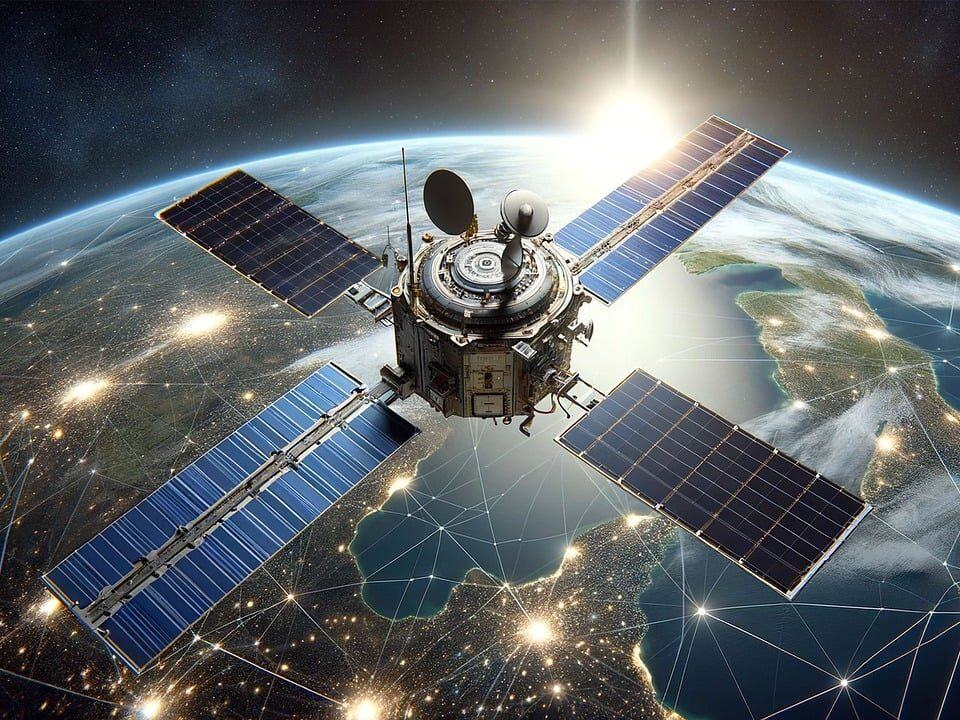10/28/2024
In August 2024, researchers from the International Astronomical Union (IAU) reported that SpaceX’s second-generation Starlink satellites significantly interfere with ground-based radio telescopes, essential for conducting space research. These radio emissions of these satellites can be up to 30 times stronger than first-generation satellites, and they blind astronomical equipment. This phenomenon raises serious concerns about the future of astronomical research and the ethical implications of space commercialization.
SpaceX’s Starlink project leads this satellite revolution, with over 7,000 satellites currently in orbit, and plans to launch up to 42,000 more. Amazon’s Project Kuiper and OneWeb are following suit, promising to deliver global internet coverage through satellite constellations. While these initiatives aim to bridge the digital divide – providing internet access to an estimated 3 billion people worldwide who lack connectivity – they’re creating unintended consequences that threaten decades of astronomical research.
The satellite mega-constellations, collective groups of thousands of small satellites, have already begun affecting radio astronomy operations. Many reports indicate increased observation disruptions due to satellite communications’ radio frequency interference. The Square Kilometre Array Observatory, an international radio telescope project, has had to implement costly additional shielding and filtering systems to protect sensitive equipment from satellite signals.
The impact extends beyond radio astronomy, as the satellite mega-constellations can also impact visual astronomy observatories, including Dr. Vera Rubin Observatory in Chile. Vishnu Reddy, professor of planetary sciences at the University of Arizona’s Lunar and Planetary Laboratory and director of the Space4 Center commented, “The proliferation of satellite mega-constellations will have a profound impact on ground-based astronomy. Sunlight reflected by these satellites will leave trails on the images taken by existing and upcoming ground-based surveys such as the Vera C. Rubin Observatory in Chile, making it challenging to do astronomical research.”
Space debris management further complicates the situation, as the risk of orbital collisions increases with each new satellite launch, known as the Kessler Effect. Holger Krag, Head of the Space Safety Program at the European Space Agency explains, “Despite measures being in place for years to prevent this, we see no decline in the number of such events. Trends toward end-of-mission disposal are improving, but at a slow pace.” If unaddressed, this accumulation of space debris could eventually trigger a catastrophic chain reaction, rendering Earth’s orbit unusable and preventing future space activities.
Satellite companies are acknowledging these concerns. SpaceX has implemented “DarkSat” and “VisorSat” technology with visors to reduce satellite reflectivity, though astronomers argue these measures are insufficient given the sheer number of satellites planned. Amazon has committed to placing its Project Kuiper satellites in orbits that minimize interference with astronomical observations, but questions remain about the long-term effectiveness of these solutions.
On the other hand, rural communities present another perspective. In remote areas where traditional internet infrastructure is impractical, satellite internet is the only viable option for internet connectivity. It offers education, healthcare, and economic opportunities that are currently unavailable due to digital divides. According to the United Nations Children’s Fund (UNICEF), “Connectivity can be a game changer for some of the world’s most marginalized children, helping them fulfill their potential and break intergenerational cycles of poverty.”
The conflict highlights a critical need for international space policy reform. Current regulations, primarily developed before the era of massive satellite constellations, need to adequately address the competing interests of commercial space companies and the scientific community. The United Nations Office for Outer Space Affairs has published guidelines for satellite constellation deployment, but progress is slow.
As engineers and policymakers grapple with these challenges, the ethical implications become increasingly apparent. How do we weigh the immediate benefits of global internet access against the potential long-term loss of astronomical research capabilities? The answer may lie in developing new technologies that allow both to coexist, but this requires significant investment and cooperation between private companies and the scientific community.

